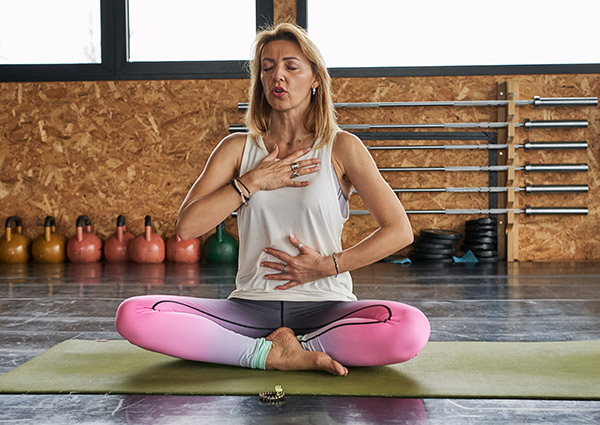
The Physical & Mental Benefits of Deep Breathing
The Physical & Mental Benefits of Deep Breathing
It’s easy to forget the wonder of breathing. We do it all day, every day, but we don’t often take the time to focus on this profound life-giving act. Our default breathing method, known as shallow chest breathing, limits the diaphragm’s range of motion and harbors tension and anxiety. The simple act of taking deep breaths can help release the tightness and provide a host of benefits to both our physical and mental health.
Deep breathing, also known as diaphragmatic breathing, happens when the air coming through the nose fills the lungs, lifts the lower belly and exhales through the nose or mouth. Deep breaths may seem unnatural at first since they’re more forceful than the normal breathing rhythms we’re used to. However, they are more efficient at fully exchanging oxygen and carbon dioxide, which helps the body relax and initiates several advantages.
Anyone can benefit from deep breathing practices, especially those with asthma, chronic obstructive pulmonary disease (COPD) and even those recovering from COVID-19.
Forget the self-consciousness and surrender yourself to receive tremendous physical and mental health benefits.
Deep breathing helps us physically by:
- Decreasing heart rate
- Lowering or stabilizing blood pressure
- Increasing lung endurance and strength
- Improving immune system health
- Improving diabetic symptoms
- Improving digestion
- Enhancing chronic pain management
- Improving quality of sleep
Deep breathing benefits mental health by:
- Releasing endorphins that improve mood
- Decreasing stress levels
- Reducing symptoms of depression and anxiety
- Reducing the possibility of burnout
Practice Different Breathing Exercises
Experiment with the following breathing practices until you find the method that resonates with you. No matter which position you’re in, breathe for about 1 minute or until you feel more at ease.
On Your Back: Lay on your back with knees bent and feet on the floor and place your hands on your lower stomach to feel the length of inhales and exhales.
On Your Stomach: Lay on your stomach, resting your forehead on your hands to allow room to breathe. As you breathe, focus on your stomach pushing on the ground or surface you’re lying on.
Sitting or Standing: These practices seem obvious but are both sufficient for observing deep breathing. For both options, be sure you’re in an upright position with good posture and place hands on your stomach, or rest one on your stomach and the other on your chest.
Yawn Motion: This technique incorporates motion with deep breathing and helps open up the chest muscles to give the diaphragm some space to expand. Sit upright on the edge of a bed or chair, stretch both arms overhead as you inhale and down to your sides as you exhale, as if you were stretching for a big yawn.




